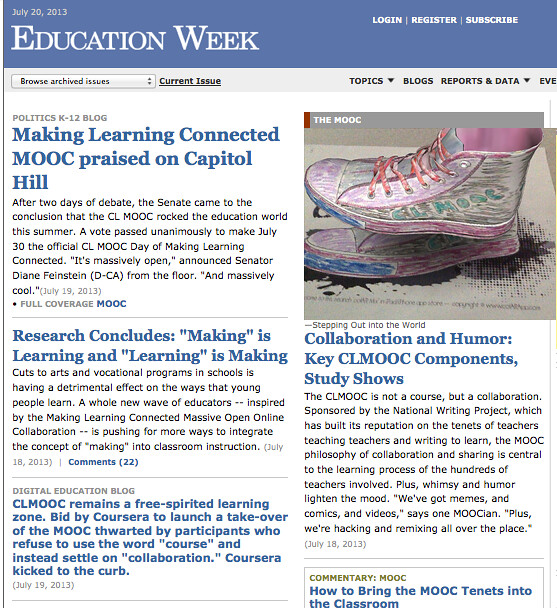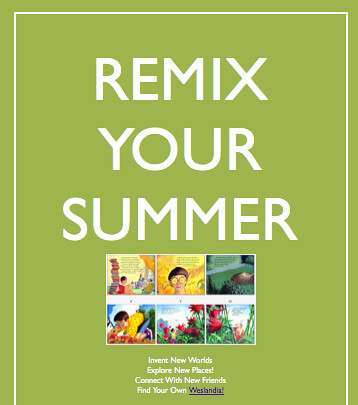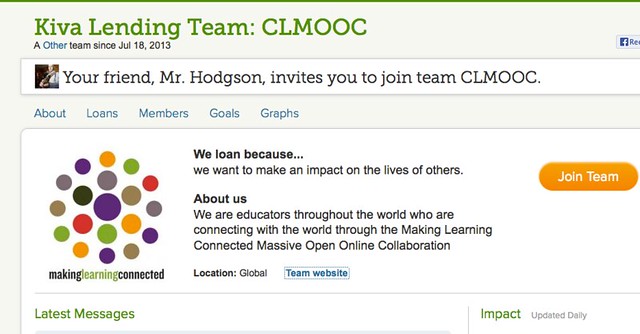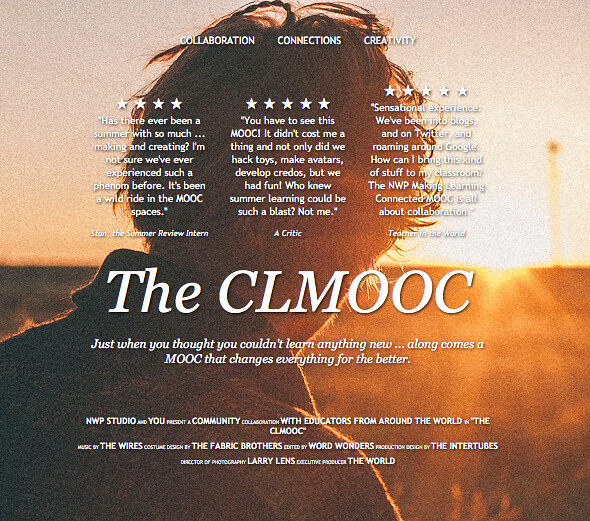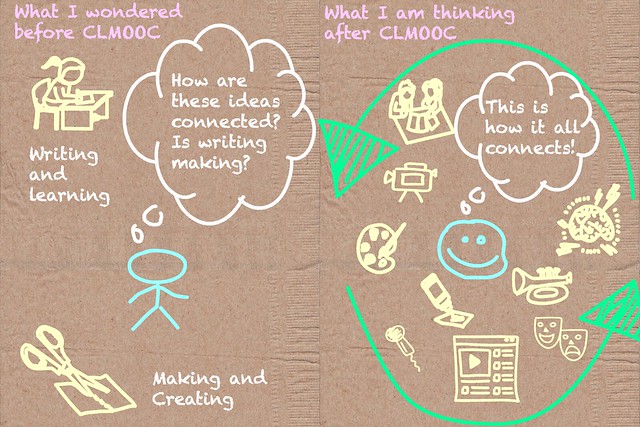
I’ve been struggling a bit with how best to reflect on the experience of being part of, and a facilitator of, the Making Learning Connected Massive Open Online Collaboration that is nearing the finish line. We’re in our last Make Cycle now, thinking about the question of “what’s next?” for how we bring our experiences in the MOOC to our educational spaces. I tinkered around with the above diagram, but I don’t like it all that much. What I was trying to get at it is how the MOOC has helped me think more about the ideas of connecting the writing experience to the making experience.
A question still out there for me is: Do I need to expand my definitions of writing and making in order to further incorporate each other in my teaching practice? Or do I need to bring more making activities into my classroom?
Maybe it is a little of both. Certainly, my students don’t just sit around and write all day. But lots of our making is done with technology, and here is where I would love to think through more about moving the concept of the Make offline, and more into the hands of students (instead of the keyboard of students).
Here are some ideas I am thinking, with the concept of the Connected Learning principles in mind ….
Last spring, I had mentioned to our art teacher — a wonderful colleague always open to ideas — about the idea of a Maker Faire for students. She had never heard of a Maker Faire, but she was intrigued. I never followed up with her after that but I wonder if there is some way to create a Maker Space in our school. I’d have to show the connections to the curriculum, and we have a new interim principal coming in, so that might influence a lot of what we do. I’ll have to do more research on school day-based Maker Faire experiences.
A colleague of mine, Gail P., has been in and out of the MOOC this summer, and she and I have talked about finding ways to connect her kindergarten students with my sixth graders, but we never got it done. This coming year, I’d like to try to make that happen on a collaborative project of some kind. In the past, I’ve tried to do some reaching across grade levels, but that dwindled away with schedule changes and curriculum shifts. It seems like it could still be done with a little creative adjustments.
Last summer, I used Edmodo with my students, but then never got back to it during the school year as a way to connect across the classes and beyond our school. I am thinking I would like do more of that this year, and I know there is a group of us sixth grade teachers in the MOOC who have been mulling over the possibility of connected our classes in some online space. I would like it to be a specific theme — the years my classes were part of the Voices on the Gulf and the many Voices for Darfur project were powerful learning experiences with global implications. Having an audience and collaborators from other parts of the world opens up the learning experience in new ways, for sure.
As for me, I don’t know how the MOOC will evolve past its end date. I found a lot of creative, generous and talented educators in the MOOC and I have looked forward to all the sharing. I am sure some of those connections will continue to be nurtured in other spaces and in other projects, but I am realistic, too. I know that when a collaborative venture like a MOOC — particularly one that is sprawled out across many different spaces — comes to a close, many connections get lost.
Going back to my diagram up above, what I was trying to capture is the eye-opening experience of how so much of the work and play and learning that we do is connected to each other, and how we make sense of those experiences through writing and collaboration and sharing. The MOOC has been a powerful pathway for learning this summer. I say that as a facilitator, but also as a participant. I hope others feel the same way, too. It’s been a chaotic, fun and energizing adventure, and I am grateful to have been here, watching the learning unfold along various trajectories and catching a ride along the way.
Peace (in the reflection),
Kevin


